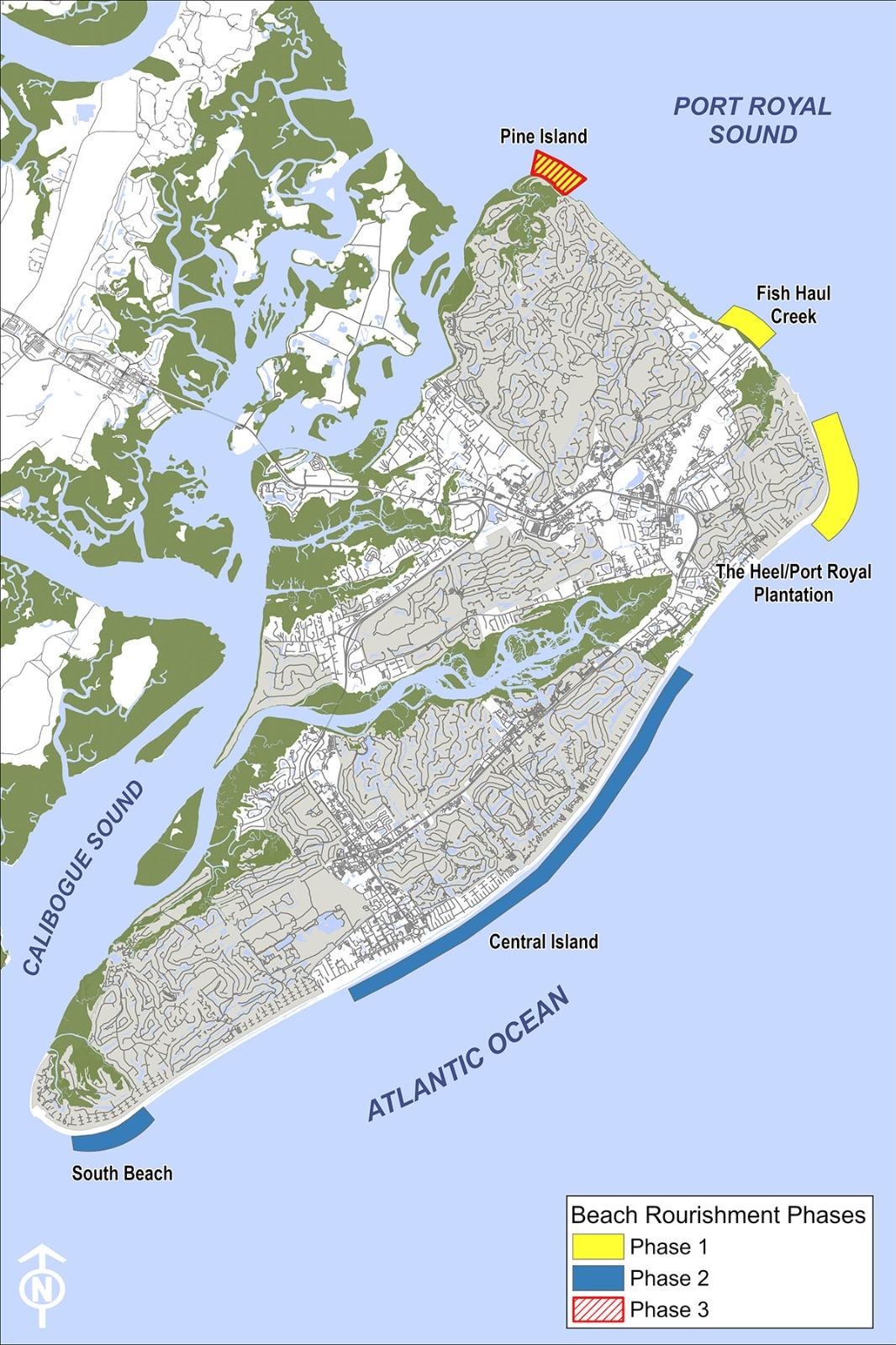Hilton Head Island Beach Renourishment Project
The information below is provided by the Town of Hilton Head.
Why Does Hilton Head Island Experience Erosion?
Hilton Head Island, the second-largest barrier island on the East Coast, naturally experiences erosion due to its unique geological structure. As a "transgressive" coastal barrier, the island has gradually migrated landward over centuries. Forces from the Port Royal Sound and Calibogue Sound continuously shift sand from the center of the island to its ends, reshaping the shoreline with each tide.
Preserving Hilton Head Island’s Pristine Beaches -What is Beach Renourishment?
Beach renourishment is the process of adding sand to eroding beaches to rebuild and stabilize the shoreline. This initiative is vital for maintaining Hilton Head Island’s wide, accessible beaches and protecting them from the impacts of natural erosion and severe weather events. The 2025 Beach Renourishment Project ensures that the island's shorelines remain resilient while safeguarding habitats for wildlife and offering a memorable experience for beach-goers.
What to Expect During Beach Renourishment and How Will Beach Renourishment Affect Visitors?
- The project is designed to minimize disruptions: Limited Impact Areas: Only 1,000-foot sections of the beach will be under construction at any time, affecting just 2% of the shoreline.
- Accessible Beaches: Temporary beach access ramps and clear signage will direct visitors to open beach areas.
- Quick Progress: The project advances at 200 to 300 feet per day, reopening completed sections as construction moves along.
Where Will Beach Renourishment Take Place? Which Areas of Hilton Head Island Are Included?
The 2025 project spans 46,500 feet (8.8 miles) of shoreline along the Atlantic Ocean and Port Royal Sound. It focuses on five key areas:
South Beach / South Island: The southernmost Atlantic Ocean shoreline.
Central Island: The central portion of the Atlantic shoreline.
The Heel: The northeastern point where the Atlantic Ocean meets Port Royal Sound.
Fish Haul Creek: The Port Royal Sound shoreline near Fish Haul Beach Park.
Pine Island: The shoreline within Hilton Head Plantation from Dolphin Head to Pine Island.
Phase 2 - Central Island, South Island, and South Beach - (September 2025 - May 2026)
Phase 3 - Pine Island Structures - (TBD) * Timeframes are subject to change

Project Implementation and Environmental Benefits How is the Renourishment Scheduled and Managed?
Scheduled Renourishment: Occurs every 8 to 10 years as part of the Beach Management Plan.Continuous Operations: The project will run 24/7 to meet its goals efficiently.
Minimal Disruption: Individual properties typically experience disruptions for one week or less.
What Are the Environmental Benefits?
Restored Habitats: Protects nesting sea turtles, shorebirds, and other wildlife.Storm Protection: Enhances the dunes’ ability to act as a natural barrier against storm surges.
Increased Biodiversity: Stabilizes dunes, protecting upland habitats and encouraging plant growth.



